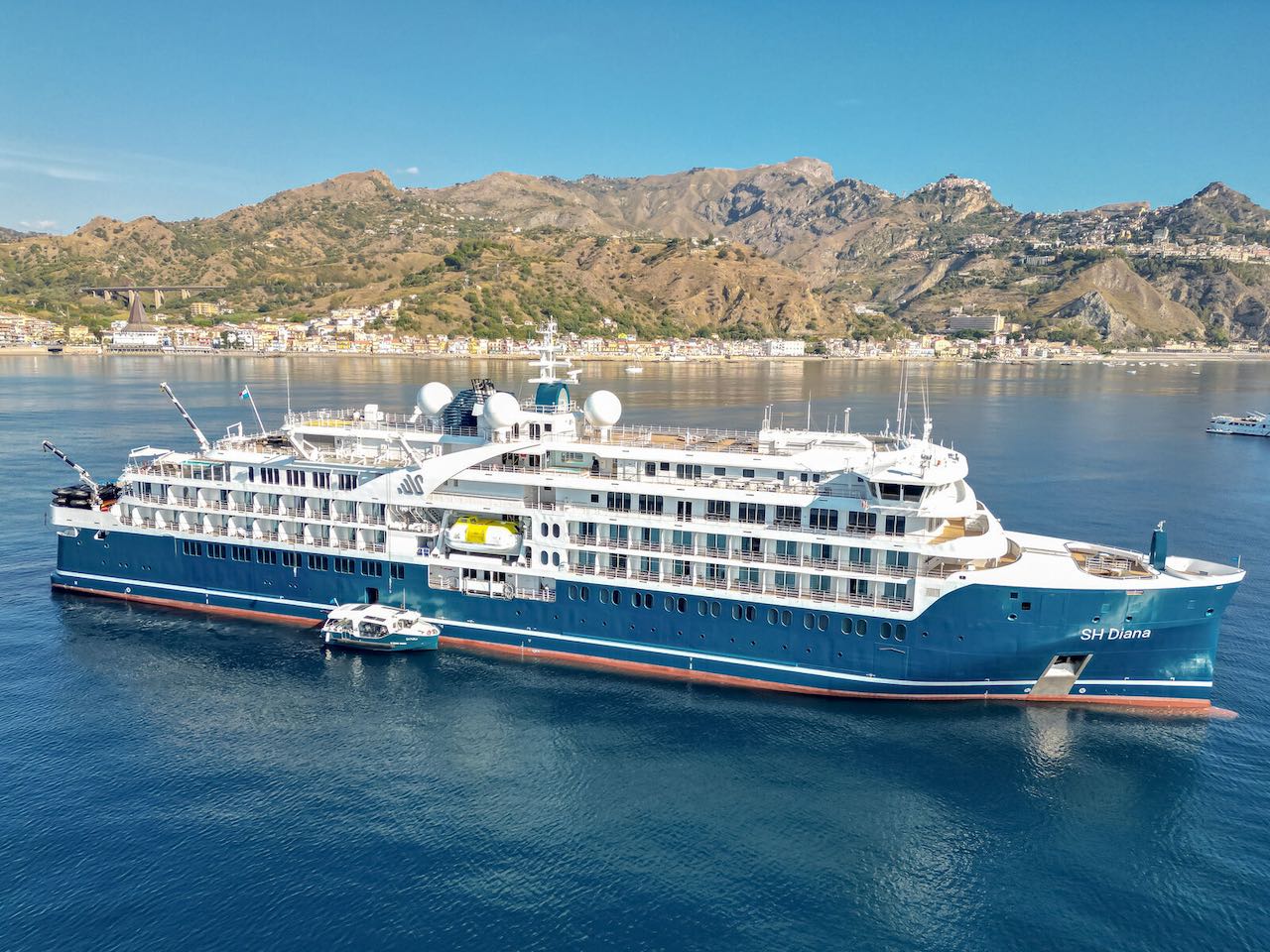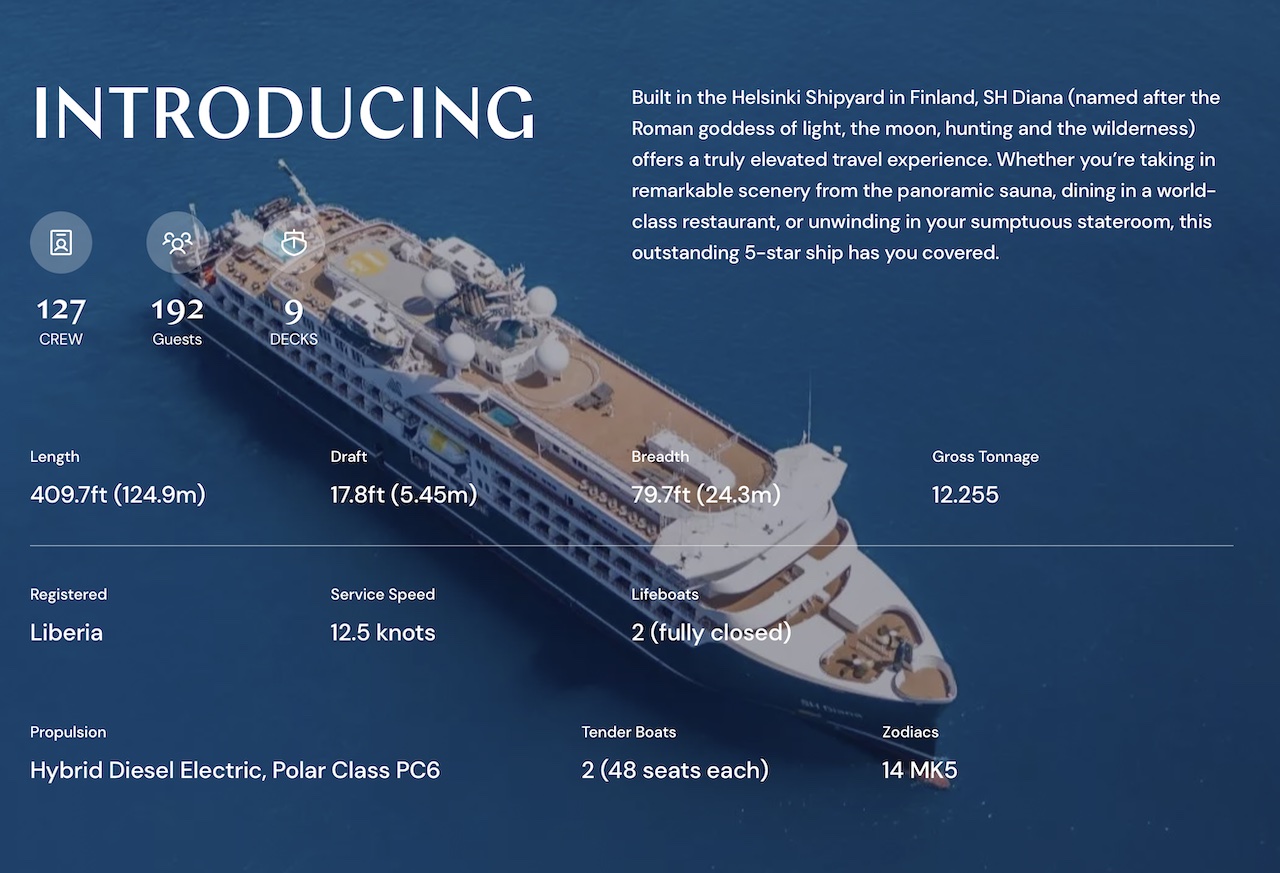Review: Swan Hellenic's Diana

When I chatted with a colleague recently about my adventure on the all-new Swan Hellenic cruise line, he replied with an air of disdain. “Aren’t they just floating retirement homes?”
If we’d been having this discussion 20 years ago, then maybe. Swan Hellenic has been around as a brand for 70 years, beginning in the UK as a niche excursion travel company for history buffs. It was bought by P&O UK in the ‘80s and subsumed into the massive Carnival cruising conglomerate in the 2000s, but dissolved by the huge US cruise giant before the decade was out.
Ten years further along, revival attempts were mounted by All Leisure Holidays Group and G Adventures, but these also came to nought.

In 2020, a new revival began, spearheaded by industry stalwart, Monaco-based Italian citizen Andrea Zito. Despite the unfortunate timing, three brand new Polar Class (PC) ships were ordered and ultimately delivered to the new-look cruise line, beginning in late 2021 with the 152-guest SH Minerva. SH Vega and SH Diana followed in 2022 and 2023.
So, to counter my colleague's objections, I was confidently able to enlighten him about the complete transformation of this brand from palliative to opulent.
The Ship: SH Diana
My debut experience with Swan Hellenic was aboard the newest of the triplets, SH Diana. This sparkling vessel expands the original ‘Project Vega’ 152-guest design to accommodate 192 lucky passengers.
Her restrained colour schemes are natural and soothing with generous use of wood and fabrics. Tillberg Design of Sweden, who have more than 60 years of experience in this sector, can take much of the credit for the crisp and airy interiors designed to “reflect the ship’s natural surrounds.”
I was spoiled by my 25sqm Balcony stateroom. Every cabin, right down to the 20sqm Oceanview ones, has a bottle of Champagne in the bar fridge, pre-stocked with complimentary snacks, soft drinks and beer. While basic WiFi is free, it's limited to text unless you upgrade at extra cost. There's a personal safe and a pair of Nikon Prostaff 3S 10x42 binoculars too. Amenities include a smart HDTV with movies and tour and ship information, individually controlled air conditioning, an Illy Espresso coffee machine with pods, a kettle and Kusmi tea bags, towels for the cabin, pool, and gym, a bathrobe, bedroom slippers, and toiletries by Lajatica.

Dining is either in the lavish Swan Restaurant on Deck 4, outside in the sunny Pool Bar & Grill or in the casual Club Lounge on Deck 7 where you can enjoy lighter meals and snacks as well as 24-hour hot beverages and cookies.
The Observation Lounge, also on Deck 7, is effectively the community hub of the vessel, where the bar and projector screen are located and where the daily briefings and lectures will take place. I particularly like the placement of retractable screens around the space so you don't have to scrum it up the front to see or hear the information. A new feature of this Vega-class vessel is the separate card room adjacent to the Observation Lounge.

If you want to spruce up for the Captain's Cocktails, there is a salon and spa up on Deck 8 where you can also find the two saunas. Something you don’t find on every expedition vessel is the passenger laundry which you can use instead of the extra-cost valet laundry. And, yes I did.
For those who’ve been aboard expedition vessels in the past, the Zodiac operations will be familiar. On Deck 3 is the ‘Base Camp’ where you will muster and be led onto your tender through a side door and single step. There is no rickety gangway or seaswept platform to worry about.
The Itinerary: Paradise Isles of the Indian Ocean
My itinerary is the most unusual 10-night ‘Paradise Isles of the Indian Ocean’ which began in the Seychelles capital of Victoria and proceeded through various remote islands including the UNESCO-listed Aldabra, home to more than 150,000 giant tortoises. The last few days we spent exploring the ancient East African trading ports of Zanzibar, Lamu and Mombasa.
Apart from the included and optional shore excursions, there was more than plenty of beach time and water frolics with snorkelling and Stand-Up/Fall-Down paddle boards. We embarked on several Zodiac excursions, mainly to look at the many seabirds, but also managed to spot dolphins and sea turtles along the way. I’m told there are a few dugongs in the huge lagoon at Aldabra, but the elusive creatures haven’t been seen in months.

These tropical itineraries take place in between polar seasons when there are a few weeks available to reposition the ships from one end of the world to the other. This is where Swan Hellenic come to the fore with voyages that truly reflect their tagline “See what others don't”.
These ‘in-between’ itineraries are no afterthought either. Imagine in-depth explorations of the African coasts, both east and west as well as Central and South America. For committed country-counters, there is even a voyage to Tristan da Cunha. Yes, look that up.
So, in summary, not only are you enjoying a most comfortable ‘cruise’ experience with all the niceties of a boutique luxury vessel, but all the capabilities of a true expedition ship able to access the remote, seldom-visited locations that make any journey aboard Swan Hellenic a true exploration.
To book your Swan Hellenic small ship cruise contact the expert team at Expedition Cruise Specialists today via email or call 1800 80 20 90 within Australia.
Roderick Eime is Australia’s leading expedition cruising photojournalist and he travelled on this cruise courtesy of Swan Hellenic. You can follow his exploits at www.expeditioncruising.com

Sign up to our monthly e-news to receive more articles like this and the latest information on adventure and expedition cruising directly from us.




















